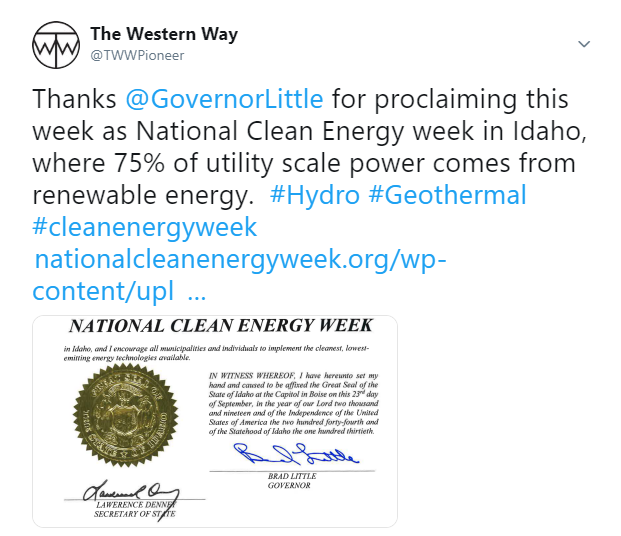By Rod Pelton and Greg Brophy
(This opinion piece first ran in The Colorado Sun on December 15, 2019.)
If you believe some politicians and media pundits, the way we produce energy in the United States is extremely controversial.
To hear them tell it, some people are wedded to fossil fuels and other people only want renewables. The two sides are locked in vicious political combat and the idea of them ever working together is impossible, according to the political and media elite.
None of that is true, of course, especially here in the eastern Colorado. Yes, we produce fossil fuels, but we are also leading the nation in a transition to renewable energy sources.
In fact, in many cases the communities most supportive of renewable energy are also big supporters of traditional energy sources, like oil and natural gas.
If you want proof, just read a new report from the National Renewable Energy Laboratory (NREL) in Golden. The report details the economic impact from a new 600-megawatt wind farm on Colorado’s Eastern Plains.
The massive wind farm spans four rural counties – Elbert, Kit Carson, Lincoln and Cheyenne – and was developed by state’s largest utility company, Xcel Energy.
The Rush Creek Wind Farm is part of Xcel Energy’s plan to reduce carbon emissions 80% by 2030 and then become 100% carbon free by 2050.
However, rather than focus on environmental issues, we’d like to point out that the NREL report tells the story of the wind farm’s significant economic benefits. For example, during the construction phase, the Rush Creek Wind Farm supported 620 jobs in the four counties where the project is located and increased the region’s economic output by $78 million.
The NREL report also examined the supply chain impact of the project on the statewide economy, because all of the wind turbine blades, towers and nacelles were built in Colorado at facilities owned by Vestas Energy. Statewide, Rush Creek’s construction supported 2,970 jobs while adding $570 million in economic output.
With the construction phase complete, the local economy will see 47 new jobs and $9 million in economic output supported by the wind farm every year, according to NREL. Statewide, the project’s annual economic footprint will be 180 jobs and $33 million in economic output.
Those jobs, by the way, will have average salaries of about $64,000 per year, well above the state average. Next, there’s tax revenue. NREL estimates Rush Creek will generate $62.5 million in property taxes over the next 25 years. These revenues will support public schools, libraries, fire departments and other essential services – and the estimates do not include millions of dollars in additional permitting fees and sales and use taxes tied to the project.
The NREL report also examines the lease payments due to farmers, ranchers and other property owners with turbines on their land. Those lease payments are estimated to be worth $45 million over the life of the project, which will “help farmers and ranchers maintain financial stability when commodity prices are low or bad weather hits the region.”
Overall, the authors of the report found that 72% of locals interviewed support the development of wind energy in their community. Likewise, 67% of local businesses experienced a positive impact from the project, according to the report.
These findings are remarkable enough on their own. But the Rush Creek story is even more noteworthy because this large-scale wind farm was built in a conservative corner of the state that strongly supports oil and natural gas development.
Consider the following: As a group, Elbert, Kit Carson, Lincoln and Cheyenne counties voted Republican in last year’s gubernatorial election in Colorado by a margin of 74% to 20%. At the same time, these four counties voted no on Proposition 112 – a ballot measure that would have all but banned oil and gas development in Colorado – by 76% to 24%.
Elbert, Kit Carson, Lincoln and Cheyenne counties also produced over 1.5 million barrels of oil and more than half a million cubic feet of natural gas last year, according to state data. And they did it while fully embracing the expansion of renewable energy in Colorado.
Because here in eastern Colorado, “all of the above” isn’t a political slogan – it’s just the way we do things. It’s also an example the rest of the country would do well to follow.
Rod Pelton (R-Cheyenne Wells) represents House District 65. He is a farmer and rancher.
Greg Brophy is a former state legislator from the Eastern Plains and the Colorado director of The Western Way.







